As you embark on the journey of mastering top-classifieds data capture techniques, remember that knowledge is power. But what if you could go beyond just knowing and truly excel in the art of data extraction? By understanding the top techniques in this realm, you open doors to a realm of possibilities that can revolutionize your data handling processes. Stay tuned to uncover the secrets that can propel your data capture endeavors to new heights.
Effective Data Extraction
Effective data extraction is a crucial process in the realm of classifieds data capture. To ensure the accuracy and relevance of the extracted data, employing data validation techniques is essential. These techniques involve verifying the integrity of the data through various checks and processes to eliminate inaccuracies and inconsistencies. By implementing data validation techniques, you can enhance the quality of the extracted data, making it more reliable for analysis and decision-making.
In addition to data validation techniques, data enrichment strategies play a vital role in improving the value of the extracted data. These strategies involve enhancing the extracted data by adding relevant information from external sources, such as social media platforms or third-party databases. By enriching the data, you can gain deeper insights and a more comprehensive understanding of the classifieds data, enabling you to make more informed decisions and drive better outcomes. Combining data validation techniques with data enrichment strategies can significantly improve the effectiveness of your data extraction process and enhance the overall quality of the captured data.
Data Quality Assurance
Ensuring data quality is a fundamental aspect of any data capture process, including classifieds data extraction. To maintain high-quality data, you must employ various techniques and strategies:
- Data Validation Techniques: Implement validation checks to ensure accuracy and completeness of the captured data. This includes checking for data type, format, range, and consistency.
- Data Cleansing Processes: Utilize data cleansing tools and methodologies to identify and rectify errors, duplicates, and inconsistencies within the captured data, ensuring its reliability and integrity.
- Data Enrichment Strategies: Enhance the captured data by adding supplementary information from external sources, improving its value and usefulness for analysis and decision-making processes.
- Data Normalization Methods: Normalize the captured data by standardizing formats, units, and structures, making it consistent and easy to compare and analyze across different datasets.
Automation in Capture
When it comes to enhancing the efficiency and accuracy of data capture processes, automation plays a pivotal role in streamlining operations and reducing manual efforts. Machine learning algorithms are utilized in automation to recognize patterns in data and improve the capture process over time. Image recognition technology is another key component of automation in data capture, allowing systems to extract information from images or scanned documents accurately.
Data Storage Solutions
To optimize the efficiency of your data capture processes, it is imperative to consider robust data storage solutions. When it comes to storing classified data, utilizing secure and reliable storage methods is crucial. Here are four key considerations for data storage solutions:
- Cloud Storage: Embracing cloud storage services can provide scalability and flexibility for your data storage needs. With cloud storage, you can access your classified data from anywhere, ensuring seamless operations.
- Data Encryption: Implementing robust data encryption protocols adds an extra layer of security to your classified data. Encryption techniques protect sensitive information from unauthorized access, maintaining confidentiality.
- Backup Systems: Setting up regular automated backups is essential to prevent data loss. Having backup systems in place ensures that even in the event of a system failure, your classified data remains safe and accessible.
- Data Retention Policies: Establishing clear data retention policies helps manage the lifecycle of classified data efficiently. By defining how long data should be stored and when it should be securely deleted, you maintain compliance and streamline storage management.
Data Privacy Considerations
Considering the sensitive nature of classified data, prioritizing data privacy is paramount to safeguarding valuable information. Privacy regulations play a crucial role in ensuring that data is handled securely and in compliance with legal requirements. Implementing robust data encryption measures is essential to protect classified information from unauthorized access. Data encryption converts data into a coded format that can only be accessed and understood with the appropriate decryption key, adding an extra layer of security to sensitive data.
Adhering to privacy regulations such as GDPR, HIPAA, or CCPA is vital to prevent data breaches and maintain trust with users entrusting their information to classified platforms. By incorporating data encryption techniques, classified platforms can mitigate the risk of data leaks and unauthorized access, ensuring that sensitive information remains confidential and secure. Prioritizing data privacy not only protects classified data but also upholds the reputation and credibility of the platform among users.
Data Analysis Methods
Utilizing effective data analysis methods is essential for extracting valuable insights and patterns from classified data. When dealing with classifieds information, employing the right techniques can provide a competitive edge in understanding trends and user behavior. Here are some key methods to consider:
- Statistical Modeling: By applying statistical models to classified data, you can uncover relationships between variables, make predictions, and identify significant factors influencing outcomes.
- Predictive Analytics: This method involves using historical data to forecast future trends and behaviors. By leveraging predictive analytics, businesses can anticipate user preferences and optimize their classified listings accordingly.
- Machine Learning Algorithms: Implementing machine learning algorithms allows for automatic model building and pattern recognition, enabling more accurate predictions and personalized recommendations in classifieds.
- Cluster Analysis: Through cluster analysis, data can be grouped based on similarities, aiding in segmenting users or items in classified listings for targeted marketing strategies.
Classifications in Data Management
In data management, classifications play a crucial role in organizing and structuring data effectively. Data classification strategies are essential for efficiently managing large volumes of data. By categorizing information based on predefined criteria such as content, source, or format, organizations can streamline data storage and retrieval processes. Effective data classification enhances data capture optimization by ensuring that relevant data is captured accurately and efficiently. This approach also aids in maintaining data quality and security by enabling the implementation of specific access controls and data protection measures based on the sensitivity of classified information. Implementing a robust classification system allows businesses to better understand their data landscape, leading to improved decision-making and strategic planning. By utilizing data classification strategies, organizations can optimize data capture processes, enhance data management practices, and ultimately derive more value from their data assets.
Frequently Asked Questions
How Can I Ensure Data Security During Capture?
Wondering how to keep data secure during capture? Implement security measures like strong encryption protocols. By encrypting data as it’s captured, you can safeguard sensitive information from unauthorized access and ensure confidentiality throughout the process.
What Are the Common Challenges in Data Extraction?
When extracting data, common challenges include ensuring data accuracy and quality. You may face issues with data storage and privacy. Remember to address these challenges to maintain the integrity and security of your captured data.
Are There Any Legal Implications for Data Capture?
When capturing data, legal implications include data privacy, compliance, and ethical considerations. It’s crucial to address consent requirements to avoid legal issues. Ensure your data capture methods align with regulations to protect both users and your business.
How Can I Handle Data From Multiple Sources?
When handling data from multiple sources, you must focus on data integration and source aggregation. Combine information efficiently to ensure accuracy and consistency. Utilize tools for seamless data merging to streamline processes and enhance decision-making capabilities.
What Are the Best Practices for Data Validation?
When it comes to data validation, ensuring data integrity is key. Preventing errors is crucial. Double-checking, setting validation rules, and regular audits can help maintain accuracy. Remember, data validation is not just a process, it’s your data’s guardian.




